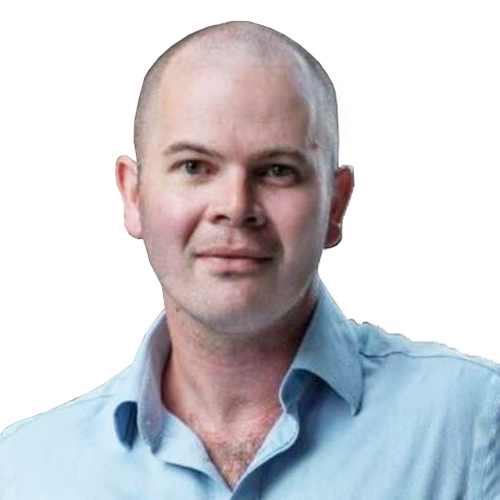Auckland faces a $20 billion redevelopment bill if it is to turn itself into a world-class city. The bill includes a second harbour crossing, an underground rail loop and the resurrection of the eastern motorway.
Mayor Dick Hubbard said the city stood at a crossroads, and that the next six
months would be critical to the future success of the region and the rest of New Zealand.
"That's not overhyping it. There are some crunch decisions to make, and about $20 billion needs to be pumped into Auckland in the next 20 years."
Already under fire for rate hikes that top $1500 next year, and proposed increases of 135 per cent over the next decade, Mr Hubbard said the bill would have to be shared by central government and local authorities.
"We've got to have those money talks sooner, rather than later.
"It would be morally wrong for the government to dump it on Auckland."
Mr Hubbard's comments follow the recently highly critical Metro report of Auckland's potential for growth written by a group of the world's leading planners.
The international experts said the city had the potential to be world class, but was hampered by a lack of leadership and focus.
Many ratepayers are outraged at plans for public money to be spent on redeveloping Eden Park, but the mayor rejected any suggestion the $320m development would become a white elephant.
"We would do ourselves a gross injustice if we built the stadium to minimum requirements. The [rugby] World Cup is of national importance."
With a projected quarter of the world's population watching rugby's showpiece in 2011, he said the global event must be the catalyst for change in the region, which had suffered from neglect in the past 20 years.
"In order to balance the books some things, like footpaths, have gone backwards. Now we've got to catch up to get them back to normal," he said.
On top of maintaining existing infrastructure such as footpaths and stormwater, Mr Hubbard outlined a long-term vision to be achieved over the next 20 years.
Urgent decisions to be made in the next six months include the redevelopment of Wynyard Pt, the resurrected eastern motorway to Manukau, Eden Park and other transport developments for the World Cup, the electrification of rail, and a $200m convention centre.
Longer term projects include motorway extensions, a second harbour crossing to the North Shore, and inner-city underground rail.
Mr Hubbard disagreed with some of the suggestions in the Metro report, including a rail link from the CBD to the airport, but said the report was a call to action.
"I'm determined that it won't be pigeon-holed like so many other reports."
Completion of the western ring route through Avondale and Waterview, at an estimated cost of $1bn, is the top of Mr Hubbard's list.
By linking the south-western and north-western motorways, the motorway would bypass the city and relieve pressure on the Harbour Bridge.
A second harbour crossing to the North Shore, preferably underground with rail, is also a high priority.
Should anything happen to the bridge, Auckland would come to a standstill for up to six months, said Mr Hubbard. "It's vulnerable. If a sugar tanker hits the pillar or there's a terrorist attack, we'd be paralysed."
The spectre of the eastern motorway has also reared its head again. Former Mayor Johns Banks lost his chains over the Eastern Transport Corridor, the controversial eight-lane highway concept to Manukau, which was dumped two years ago after public pressure.
The project was scaled back and renamed the Auckland Manukau Eastern Transport Initiative. It includes a public transport component for Auckland, in addition to improvements to highways and roads through Manukau. However, it no longer includes a motorway into central Auckland.
"You start adding those sorts of things, you get to $20bn pretty quickly. But we want to be a great city, not a good one, and great costs more," Mr Hubbard said.
'Tall poppy' Auckland comes under fire
Auckland culture is risk averse, intolerant of failure and suffers from tall poppy syndrome.
In a hard-hitting Metro Auckland report, international planning experts have warned that the city must take action to become world class -and take full advantage of the impending Rugby World Cup.
The taskforce, headed by the chief planning adviser to the British government and the OECD, acknowledged that Auckland had the potential building blocks to be successful.
Speaking of tall poppy syndrome, one member of the review team was particularly convinced that there is a "special strain of this disease which afflicts former British colonies".
Among the more stinging criticisms about Auckland were:
Plans for the city were too small and uncoordinated to make an impact.
Auckland lacked a strong brand and leadership.
The city needed one plan rather than several levels of local government.
The city failed to make the most of its natural beauty.
"Within its beautiful setting, the city is quite drab in places, and does not always present a clean face," said one Metro member.
To bring Auckland to the world, the Rugby World Cup 2011 and waterfront redevelopment of Wynyard Pt needed to be the catalyst for the improvements needed.
To capitalise on exposure from the rugby, the report recommended bidding to host the 2014 Cricket World Cup, the 2018 Commonwealth Games, and major cultural and political events.
City's $20b facelift, but who will pay?

Auckland faces a $20 billion redevelopment bill if it is to turn itself into a world-class city. The bill includes a second harbour crossing, an underground rail loop and the resurrection of the eastern motorway.
Mayor Dick Hubbard said the city stood at a crossroads, and that the next six
AdvertisementAdvertise with NZME.